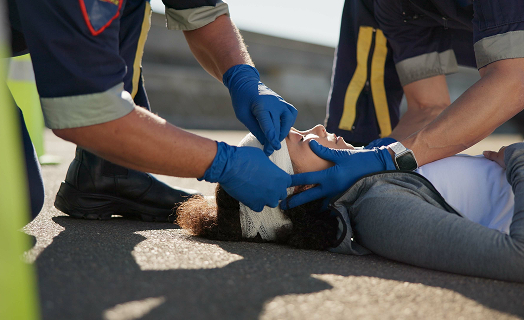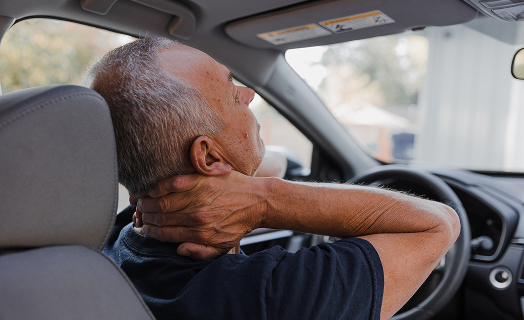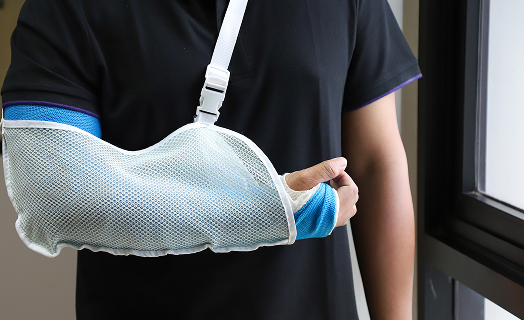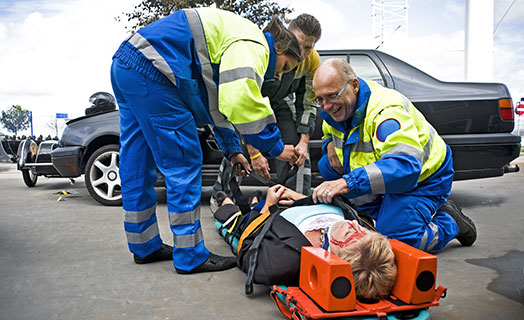Maryland Car Accident Lawyer
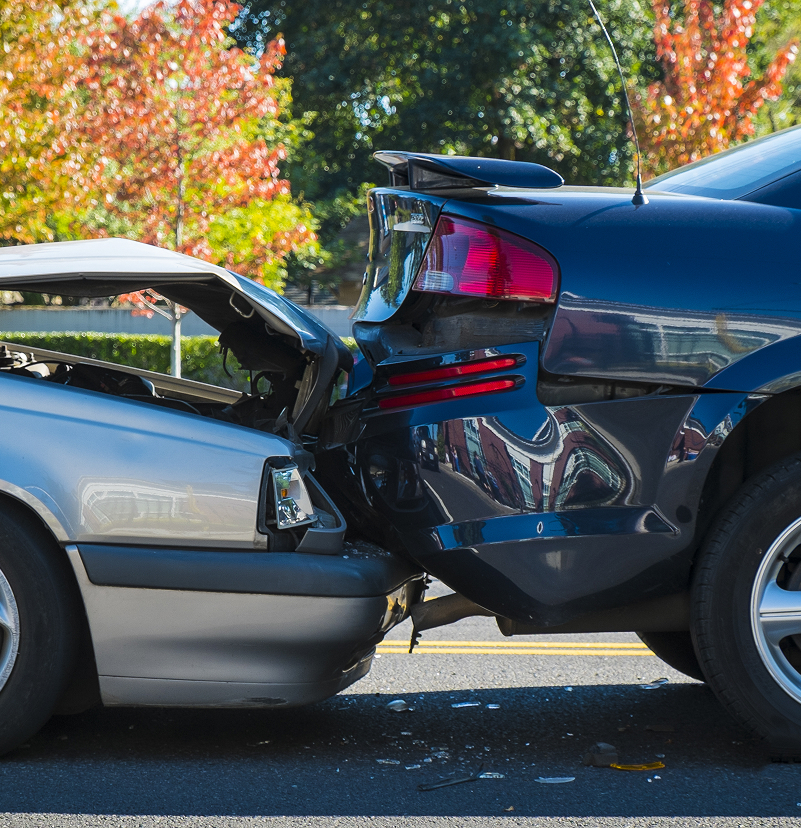 If you have been injured in a Maryland car accident, you may be suffering from serious, life-altering issues. Perhaps you are facing expensive medical bills that just keep piling up. Maybe you have no idea how you are going to pay these bills, especially since your injuries are preventing you from going to work and earning a living. You might also be suffering from a range of non-economic damages, such as emotional distress, PTSD, loss of enjoyment of life, and many others.
If you have been injured in a Maryland car accident, you may be suffering from serious, life-altering issues. Perhaps you are facing expensive medical bills that just keep piling up. Maybe you have no idea how you are going to pay these bills, especially since your injuries are preventing you from going to work and earning a living. You might also be suffering from a range of non-economic damages, such as emotional distress, PTSD, loss of enjoyment of life, and many others.
Although your situation can seem hopeless after a Maryland car accident, there is always hope. By teaming up with a Maryland car accident lawyer, you can file a personal injury lawsuit against those responsible for causing your injuries. This lawsuit can provide you with everything you need to cover your various damages. But how hard is it to sue after a car accident in Maryland? What is the legal process? How much money can you receive? Let’s find out:
Maryland’s Negligence Framework
Unlike the vast majority of states, Maryland has remained wedded to contributory negligence since Harrison v. Montgomery County (1847). Under this doctrine, a plaintiff who is even one percent at fault for the collision is barred from recovering a single dollar from the other party. Insurance adjusters know this and scour police narratives, dash-cam footage, and medical notes for any thread they can spin into shared blame.
Contributory negligence makes three things crucial:
- Early Evidence Preservation – Every hour that skid marks fade, vehicles are repaired, or surveillance footage is overwritten weakens your leverage.
- Meticulous Storytelling – A single offhand remark (“Maybe I glanced at my phone”) can become Exhibit A against you.
- Aggressive Investigation – Reconstructing speed, traffic-signal timing, and vehicle dynamics often takes accident-reconstruction experts and subpoenas that only a lawsuit can compel.
Even if lawmakers eventually pivot toward comparative negligence, any claim filed today lives under the old rule. That is why you need a seasoned Maryland car accident attorney who has spent years defeating defense attempts to shift the narrative.
Statute of Limitations and Notice Deadlines
Maryland grants most car-accident victims three years from the date of the crash to file suit (Md. Cts. & Jud. Proc. § 5-101). Miss the deadline and your claim is almost certainly gone, no matter how severe the injury. Two shorter clocks can also trip people up:
- Claims Against Government Vehicles or Road Crews – If the defendant is a state or local agency, you must file a written notice of claim under the Maryland Tort Claims Act within one year (sooner in some municipalities).
- Uninsured-Motorist Arbitration – Insurance policies may require written notice “as soon as practicable,” which courts have interpreted strictly.
Because factual investigation eats up months—and insurers often stall until witnesses move or data disappears—retaining an accident lawyer quickly is a best practice.
Insurance Basics Every Maryland Driver Should Know
Maryland is an at-fault state and requires the following minimum auto liability coverage:
- Bodily injury: $30,000 per person / $60,000 per accident
- Property damage: $15,000 per accident
Drivers must also carry Uninsured/Underinsured Motorist (UM/UIM) coverage at the same limits and Personal Injury Protection (PIP) of at least $2,500 unless they opt out in writing. PIP pays reasonable medical expenses and 85 % of lost wages (up to $2,500) regardless of fault, usually within 30 days. While PIP helps in the short term, it rarely covers ongoing therapy, surgery, or diminished earnings, and the carrier may seek reimbursement from your settlement.
Tip: Higher UM/UIM limits are inexpensive compared with the catastrophic costs of being hit by an uninsured driver; we see too many claims where minimum limits evaporate in the first night’s hospital bill.
Maryland’s Top Common Crash-Related Injuries
Car accidents generate a staggering variety of trauma, from the familiar “fender-bender whiplash” to life-changing neurological damage. Below are the six most common injuries:
- Traumatic Brain Injuries (TBIs) – Concussions, diffuse axonal injuries, and hemorrhages can lead to cognitive impairment, mood swings, or epilepsy years after impact.
- Spinal Cord Injuries – Paraplegia or quadriplegia often necessitate full-time caregivers, home modifications, and six-figure annual medical costs.
- Complex Fractures and Orthopedic Injuries – A shattered pelvic ring or comminuted tibia may require hardware, bone grafts, and multiple revision surgeries.
- Disfiguring Lacerations or Burns – Scarring—especially to the face and hands—creates emotional harm that Maryland law recognizes under “non-economic damages.”
- Internal Organ Damage – Liver lacerations, aortic tears, and splenic ruptures demand rapid surgery and carry high mortality if complications develop.
- Psychological Harm – Chronic pain disorders, PTSD, and depression can be just as debilitating as physical injuries, affecting marital relationships and employability.
Comprehensive diagnoses documented by credible physicians strengthen both settlement value and jury appeal.
What Damages Can You Recover?
Maryland recognizes three primary categories:
- Economic Damages – Medical bills (past and future), lost wages, diminished earning capacity, out-of-pocket costs (childcare, transportation, prescription co-pays), and property loss. There is no statutory cap on economic damages.
- Non-Economic Damages – Pain, suffering, emotional distress, inconvenience, disfigurement, loss of consortium, and loss of enjoyment of life. These are capped statewide; for injuries occurring in 2025, the ceiling is $935,000 and rises by $15,000 each year.
- Punitive Damages – Rare, but potentially available if the defendant’s conduct shows actual malice (e.g., drunk driving with a prior conviction).
Your car accident lawyer’s task is to weave medical records, expert testimony, and human-interest storytelling into a compelling narrative that translates lived hardship into a specific dollar figure.
What Is the Legal Process After a Maryland Car Accident?
Although every collision has its own fact pattern, Maryland personal-injury claims typically follow a predictable pathway from first call to final payment. Understanding each phase helps you make informed decisions and avoid mistakes that can jeopardize compensation in a contributory-negligence state where one misstep may be fatal to your case.
The journey begins with your initial consultation where you recount the crash, outline medical treatment, and identify potential defendants. Top rated counsel screens for deadlines: Maryland’s three-year statute of limitations for negligence suits, the one-year notice requirement for claims against state or local agencies, and prompt notice obligations under uninsured-motorist provisions. If the clock is still running, a retainer agreement authorizes the attorney to act on your behalf.
Next comes investigation and evidence preservation. Your car accident lawyer orders the police report, 911 recordings, and body-cam footage; photographs vehicle damage; and dispatches spoliation letters to keep data intact. In serious crashes, experts download event-data-recorder “black boxes,” map skid marks with drones, or retrieve traffic-signal timing logs. Meanwhile, you continue medical care—orthopedics, neurology, physical therapy—creating the treatment records that will anchor damages.
As bills accumulate, counsel coordinates insurance benefits. Personal Injury Protection (PIP) can pay limited medical expenses and 85 percent of lost wages regardless of fault. Health insurers, Medicare, or Medicaid may step in, but they often claim reimbursement (subrogation) from any settlement, so lien tracking begins early.
Once your doctors declare maximum medical improvement or can forecast future needs, the attorney assembles a demand package. This binder-like dossier includes accident-scene photos, diagnostic imaging, operative reports, wage-loss spreadsheets, and a settlement request grounded in economic and non-economic damages. Seasoned Maryland car accident lawyers balance ambition with realism, citing jury verdict research for similar injuries in Prince George’s, Montgomery, or Baltimore City circuits.
Negotiations ensue. Some carriers bargain in good faith; others lowball or stall, betting that financial pressure will force a quick compromise. If offers remain unacceptable—or if limitations threaten—counsel files a complaint in the appropriate circuit court, pays the filing fee, and arranges service of process. The defendant has thirty days to answer, typically denying liability and asserting affirmative defenses such as contributory negligence.
The case enters discovery, a truth-finding phase that may last six to twelve months. Both sides exchange written interrogatories, document requests, and subpoenas. Depositions put witnesses, officers, and medical experts under oath. Motions to compel or for protective orders resolve disclosure disputes; Daubert challenges can exclude unreliable expert testimony. Throughout discovery, court-ordered mediation or settlement conferences encourage resolution without trial.
If impasse persists, the matter proceeds to a jury trial—usually six citizens in Maryland civil cases—where each party presents evidence, cross-examines experts, and argues liability and damages. Because contributory negligence bars recovery if the plaintiff is even one percent at fault, the defense often focuses on blaming the victim. A unanimous verdict is required. Post-trial motions or appeals may follow, but insurers often pay within thirty days once judgments become final.
Finally, the attorney resolves outstanding liens and deducts agreed-upon fees and costs before issuing your net proceeds. Though arduous, a disciplined legal process transforms raw suffering into a structured claim, maximizing the likelihood of full, fair compensation under Maryland law.
Request Your No-Obligation Case Evaluation Now
Time can steal evidence and extinguish claims. Call (301) 259-5101 today or email ben@benevanlaw.com for a complimentary, confidential review. We will outline your options, estimate realistic compensation, and—if you decide to retain us—launch immediate action against every responsible party.

